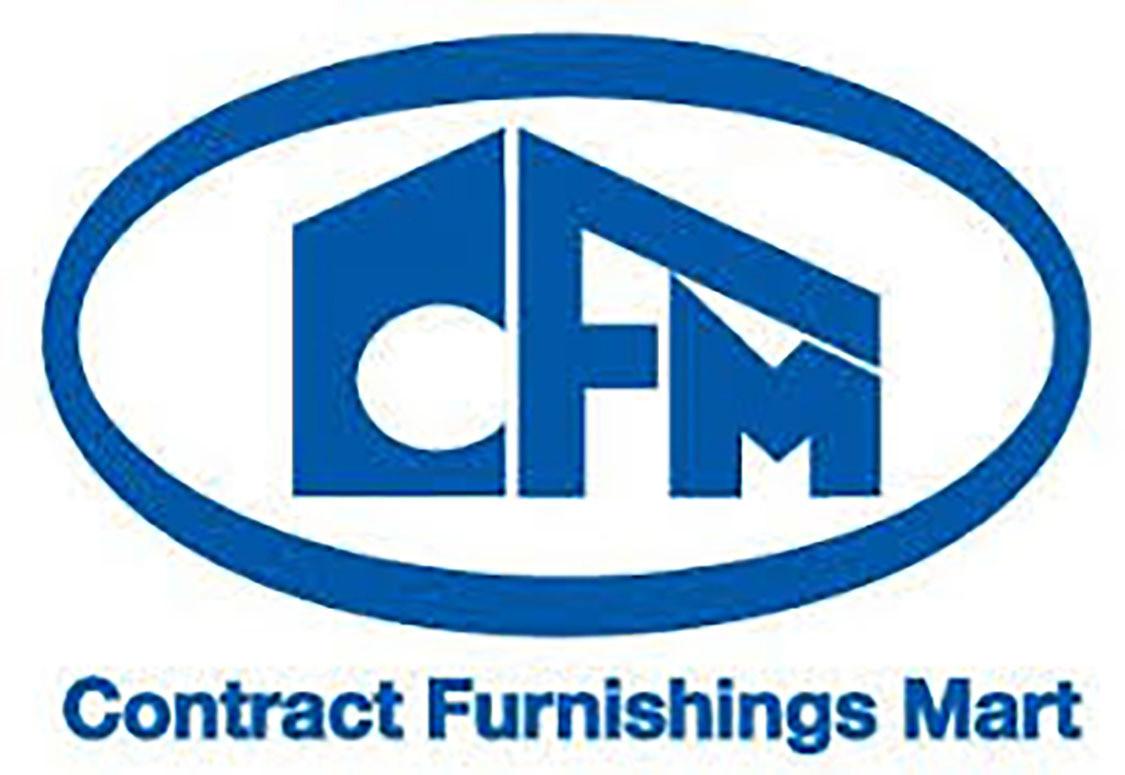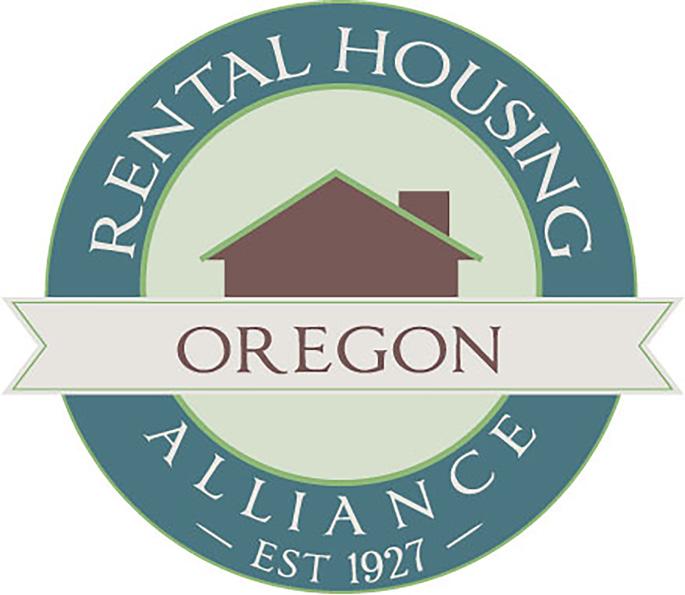




Interested in registering for the National Tenant Network class? Email mgohman@ntnonline.com or call 503/635-1118 to register.
To register for any of the RHA offerings then visit rhaoregon.org to register.






Keep an eye on the rhaoregon.org calendar as it is being updated daily with new classes and events. Please visit rhaoregon.org for more information on classes: https://rhaoregon.org/calendar/

Goose Hollow Windows
Warren Allen LLP
Boer & Passannante, PS.
Resilient Retrofits
Clear Water Construction
1031 Capital Solutions
National Tenant Network
Water Bear Restoration
HFO
Balancing Point
Stegmann Insurace-Farmers Insurance
Paint America
NW Pest Control
Real Estate Roofing and Mold Solutions
Gateway Property Management
Landlord Solutions




These companies made themselves available to our membership to get to know them better and discover what they have to offer to assist with your rental business.
Thanks again, Vendor Fair participants. Your involvement was appreciated!!
Clear Water Construction
Paint America
NW Pest Control
WaterBear Restoration
All RHA Vendor information can be found online at https://rhaoregon.org/partnerdirectory/



FREE RHA DINNER MEETING Sponsored by Contract Furnishings Mart
OKTOBERFEST- Tuesday October 15th at 6:00pm
THIS EVENT IS FREE TO RHA MEMBERS ONLY (limited space available. RSVP now before it’s too late.)
CFM Gresham Location at 3108 NE 181st Ave, Portland, OR 97230
FREE OKTOBERFEST FOOD AND ADULT BEVERAGES. COME NETWORK WITH OTHER LANDLORDS AND LANDLORD VENDORS. To RSVP go to: https://rhaoregon.org/calendar/month/2024-10/


by Jerry L’Ecuyer & Frank Alvarez
Dear Maintenance Men,
I have a small maintenance crew I’m trying to train and make more professional. They are a great team but need some polishing. Most are generalists and can pretty much tackle anything. My concerns are whether they are doing it right, on time and on budget. Sometimes I think outsourcing would be cheaper.
Thoughts?
Jim.
Dear Jim,
A tough question with so many things to consider, particularly in California where doing business and the associated costs to employ is ever more challenging. However, the ability to make quick decisions, deploy your teamsand control performance for a satisfactory outcome can be priceless. Most times our name and reputation are on the line. It may have taken years upon years to build your reputation, but it only takes a few days to ruin it. Because of this fact, we instill a culture of company ambassadors in every technician. They must understand they are the face of the company and their ability to deliver customer service will impact us both positively and negatively. During our maintenance consultations we work on how important the maintenance technician’s role is, their personal value and what it represents to the company and customer. It really doesn’t matter how skilled a technician is if their attitude towards work, the company, and customer is horrible. Over the years we have developed a process of building the individual, building the team and building on their skills. Most times, great employees are developed not found.
Many apartment associations offer fantastic courses to help with educating and developing maintenance technicians. We encourage you to invest in your team as they are the single greatest asset of any company.
As far as outsourcing is concerned, the numbers do not lie. There are many free online Labor Burden Calculator Tools which can help you determine if outsourcing is cheaper than operating employees.
We recommend the following:
1. Outsource anything that can cause fire, flood or blood. (cheap insurance)
2. Outsource technical or higher skilled work.
3. Outsource anything you are not insured for.
4. Outsource anything for which you do not have the tools or equipment to perform the job expeditiously.
5. Outsource when using your team will cause delays in delivering services.
Dear Maintenance Men:
The angle stop valves under the kitchen sink are very hard to close. I attempted to replace the valves but could not remove the brass collar around the copper pipe. The new angle stop valves do not thread up and the old nut is trapped behind the collar. What can I do? Also, how often should I routinely replace my under-sink water flex lines?
Fredric
Dear Fredric:
On the first question, it is always best to remove the old collar. That is easier said than done. You cannot pull off the collar with your fingers; it is too tight. Pliers will damage your soft copper pipe and cutting the line behind the collar is OK if you have enough pipe to spare, but in most cases the space is limited and cutting the line won’t work. The hardware or plumbing store sells a compression sleeve puller ($20.00 or less) designed for this job and it will not damage your pipe. You can now install your new angle stop valve. An alternative once you remove the collar is to solder a male or female ½” fitting to the end of the copper pipe. Install a male or female angle stop valve and never again deal with a stubborn brass collar. If you ever need to replace the valve, just twist it off and install a new one. We also recommend that you install “quarter turn ball valves” when replacing the old angle stop valves. The ball valves are less susceptible to sticking in the open position after many years of use.
On your second question about replacing under sink water lines; if any of your lines are the white plastic lines, replace them immediately; they are a flood waiting to happen. We like using stainless-steel braided flex lines. They last a long time, and don’t seem as susceptible to fatigue or abuse. A way to spot a bad flex line before they leak or burst is to look for telltale signs of rust, calcium build-up, loose or broken braids, tight kinks, or brown spots as they just look bad. If you are replacing angle stop valves, install new water lines at the same time.
Dear Maintenance Men: Readers
We are in mid-summer and believe it or not, WINTER is COMING! Now is the time to review your pre-winter check list and do your preventive maintenance. Do you have a PreWinter Check List? See below for a good start.
Dear Reader:

(continued on page 6)

Dear Maintenance Men:
CONTINUED FROM PAGE 5
Here are a few tips:
1: We like to start at the top and check the roof for any damage. Check the flashing, roof transitions and fascia boards. Don’t forget to check any downspouts and drain covers.
2: Check all the windows and make sure they well sealed. Clean out the weep holes in any aluminum window frames and caulking on wooden windows. This is a good time to put a drop of grease on the moving parts of the crank-out windows. Check screens for holes and replace any missing screens.
3: Check the proper operation of all smoke and carbon monoxide alarms. Keep note of the original installation date and the date each alarm was checked thereafter for your records.
4: Check the building’s siding, brick and stucco walls for cracks, peeling paint and rot.
5: Clean out air conditioning filters and vents. Remove any lint, dust and dirt from around A/C coils.
6: Check sidewalks, stairs, decks, balconies and ramps for cracks, lifting and possible water intrusion.
7: Turn on and check all lawn sprinkler valves and look for broken heads, pipes and errant concrete watering.
8: Inspect water heaters and boilers for proper operation.
9: Check and adjust any exterior lights and timers.
10: Check on your residents and ask for any feedback on anything that might need repaired. They live at the building day in and day out. Their input can be quite valuable in terms of preventive maintenance and resident relations.
Bio:
If you need maintenance work or consultation for your building or project, please feel free to contact us. We are available throughout Southern California. For an appointment, please call Buffalo Maintenance, Inc. at 714 956-8371
Frank Alvarez is licensed contractor and the Operations Director and co-owner of Buffalo Maintenance, Inc. He has been involved with apartment maintenance & construction for over 30 years. Frankie is President of the Apartment Association of Orange County and a lecturer, educational instructor and Chair of the Education Committee of the AAOC. He is also Chairman of the Product Service Counsel. Frank can be reached at (714) 956-8371 Frankie@BuffaloMaintenance.com For more info please go to: www.BuffaloMaintenance.com
Jerry L'Ecuyer is a real estate broker. He is currently a Director Emeritus and Past President of the Apartment Association of Orange County and past Chairman of the association’s Education Committee. Jerry has been involved with apartments as a professional since 1988.
Due to safety concerns at our NE Portland office, RHA Oregon will no longer be accepting cash for purchases or walk in services.
RHA Oregon office doors may be locked during business hours. If you have an appointment or have a forms order placed for next day pick up, then please feel free to ring the office door bell upon your arrival or call 503/254-4723 extension -0- to let us know you are here.
Please NO WALK-INS. If you are in immediate need of forms visit rhaoregon.org for downloadable forms.
RHA Oregon office is closed daily Monday-Thursday from 1:00pm-2:00pm for employees’ breaks.
RHA Oregon office is closed every Friday for in-service work days for the employees. Plan your hardcopy forms orders accordingly in order to pick up Monday through Thursday.
As a reminder RHA Oregon's phone tree is as follows:
Call us at (503) 254- 4723:
Ext. 1 – FORMS PURCHASES:
PLEASE NOTE: FORMS are available for NEXT-BUSINESSDAY pick-up ONLY. Please order by 4:00 pm for curbside pickup NEXT-BUSINESS-DAY from 9:00am – 4:00pm. All forms sales are FINAL. For immediate forms needs visit rhaoregon. org to download forms.
Ext. 2 – MENTOR HOTLINE: OR EMAIL YOUR QUESTION TO: hotline@rhaoregon.org – A Volunteer Mentor will personally reply to your questions within 24 hours Monday thru Friday.
Ext. 3 – MEMBERSHIP, CLASS & EVENT REGISTRATIONS
Ext 105- BOOKKEEPER, Available Monday, Wednesday and Friday
Thank you for your understanding, Cari Pierce, Director of Operations for Rental Housing Alliance Oregon


by teve Lockwood, permission to reprint form Rental Housing Journal
As a multifamily property owner, nothing is more important than keeping your residents and property safe. This means protecting your property from one of the most common causes of multifamily property damage: fire. According to the National Fire Sprinkler Association, there are an average of 88,600 apartment fires in the United States per year and it is the third leading cause of insurance claims according to the National Multifamily Housing Council. The threat of fire damage is real, which means multifamily property owners need to take fire safety seriously. As an expert in multifamily fire-safety maintenance and testing, I know that many multifamily property owners can limit their liability with very minor fixes to their firesafety plan. Here are a few tips to help improve fire safety at your apartment complex.
The biggest mistake multifamily property owners make is also the simplest to fix: All multifamily property owners must do an annual firesafety inspection. Too many apartment owners take too long to do fire safety inspections. I see property owners six to seven months past due for inspections because they have not fixed the deficiencies they were noted for the year prior. An annual inspection is the simplest way to learn about lapses in your fire safety plan. Do these yearly or you will run the risk of insurance not covering you when a fire occurs.
Apartment complex owners are going to paint the interior and exterior of their property at some point. But that paint job can cause one of the most common fire safety mistakes. Accidentally painting sprinkler heads is an incredibly common but dangerous mistake that multifamily property owners make. Painting a sprinkler head inhibits the spray pattern of the head, which hurts its ability to put out fires. A sprinkler head that is painted closed cannot discharge. If you paint over one, you have to replace the whole head. You can’t just clean it. Hire a painter who understands this part of the fire code and properly covers up sprinkler heads before painting.
Sprinkler systems will wear over time. Bacteria from the water in your system will build over time and rust your system from the inside out. The piping in your fire system can be bad on the inside while looking perfectly fine on the outside, so you might not even know there is an issue. Not addressing internally corroded pipes will increase the chances of having a pipe burst. A pipe bursting during a fire emergency will make your sprinkler system unusable. The best way to fix this issue is to hire someone to do an internal pipe and valve inspection once every five years or do one on any multifamily property

you are looking to purchase. This inspection will let you know the condition of your pipes and valves and replace any faulty pipes before they fail you in an emergency.
Fire extinguishers are the first line of defense against any fire. If the fire extinguisher does its job in time, your more extensive fire system won’t need to activate. Unfortunately, fire extinguishers are also always the last thing to be replaced due to compliance issues. Inspect your fire extinguishers annually; they need a full tear-down inspection every six years. This is when a fire safety expert will break down your fire extinguisher, empty it of powder, clean all the parts, and replace any defective ones. You should get a hydrostatic test every 12 years, in which your fire extinguisher is filled with water or oil and then pressurized to test the integrity of its shell. Extinguishers get sun-damaged, rusted, or dented all the time and are never inspected. Inspecting your fire extinguishers ensure you can stop fires before they become a bigger dear.
You are going to need to get a fire safety inspection at least once per year. Every piece of fire safety equipment will be marked with the date it was last inspected. Look at that date, and one year from that date is when you need to get another inspection. The best way to get a fire inspection is to Google for a fire safety inspector and pick one that has a lot of good reviews. You can also ask any friends or property owners you trust about who does their inspections. The fire department does not give recommendations for fire-inspection companies in order to avoid the appearance of favoritism.
It is important to note that multifamily property owners are not required to have a specific fire evacuation or communication plan to operate, but it is recommended that you create one with the help of an expert. Creating a plan does not need to be complicated. An easily available property map with labeled fire escape routes will go a long way in helping people remove themselves from danger. An annual email to tenants to remind them of your fire safety plan would also be helpful, even though it’s not a required safety step.
Steve Lockwood is the owner of Mountain State Fire Protection LLC in Mesa, Arizona
by David Pickron, permission to reprint by Rental Housing Journal
Early on in my investing career, I flew by the seat of my pants. I had no real policies or guidelines: I relied on gut reactions to situations as they surfaced. As I travel and meet with different real state groups across the country, I always ask this critically important question: “Who here uses a detailed criteria?” Rarely do I get many hands raised. In fact you may be asking right now, “What criteria and more importantly, how do I make one?”
Like any business, your rental criteria can function as your rental policy, lining out your rules and regulations. It covers questions such as:
• Can I smoke on the property?
• Do you rent to people with criminal history?
• If yes, what kind of history would disqualify me?
• How high does my credit need to be in order to qualify?
Think of your criteria as an FAQ for those applying for your property. I love the fact that I have all my requirements written down for the world to see. No surprises! And best of all, this helps me treat everyone the same and avoid even a hint of a fair housing violation.
One other important note is I always have unique criteria for each property in my portfolio. Factors like location, square footage, and age or condition of the home all go into the creation of the criteria. I may require a lower credit score, less down payment, the inclusion of pets, or other things that are unique to that property. With that being said, I give every person who views that property the same criteria for that unique property.
While having your criteria is crucial, sharing it is even more important. I like to share with my potential tenants throughout our interactions in the following three ways.
1. SHARE YOUR CRITERIA ON YOUR LISTING Isn’t it a waste of everyone’s time to look at the listing, consider, schedule, and show a property when the applicant doesn’t even meet the criteria? Though I would encourage you to let everyone apply, giving them your criteria is advance allows them to read it before they reach out or see the property. If an individual reviewing your listing has three dogs and is able to see that this property doesn’t accepts pets, chances are they will move on to the next listing. This saves you time from responding to someone who will never qualify under that properties
criteria.
2. PROVIDE AND REVIEW A COPY OF THE CRITERIA AT THE TIME OF SHOWING THE PROPERTY
Once again, if you do not allow smoking on that property, your applicant will have heard and acknowledged that , so even if you forget to mention that in the walk through, you’re still covered. A detailed criteria lets them know you are a professional and those trying to get away with something will move on. On the other hand, if they still apply and you have to deny them for something on the criteria, you know they took the chance, hoping you would not find out or they flat out lied to you. Either way, this is not an individual you want to enter into business with anyway.
3. BEFORE YOU INVITE THEM TO APPLY, SEND THEM THE LINK TO SEE THE SPECIFIC CRITERIA FOR THAT PROPERTY
The Rent Perfect software I use does that automatically, providing potential applicants just one more chance to see the rules of that specific property in advance. Simply put, if they cannot pass my rules, they will be declined and I’ll move to the next applicant.
As a landlord, I give them three separate times to acknowledge and understand my rules before they pay the application fee. I would rather have the tough conversations before they apply and become my tenant. Catching a renter smoking after the fact while they are living on the property is much more difficult (and far more expensive) situation. By being open and sharing your criteria, you can treat everyone the same with a well-documented process if there is ever a fair housing complaint against you. Remember, you are hoping to make this individual your business partner for the next few years. Taking this small but critical step is just one way to help you get the right tenant the first time.
David Pickron is president of Rent Perfect, a private investigator, and fellow landlord who manages several shortand long-term rentals. Subscribe to his weekly Rent Perfect Podcast (available on YouTube, Spotify, and Apple Podcasts) to stay up-to-date on the latest industry news and for expert tips for managing your properties.

by Loren Levy, permission to reprint from Apartment Owners Association
In the world of renting, both landlords and renters often overlook the importance or renters insurance. However, when faced with unexpected natural disasters or damages, the value of this insurance becomes pretty evident.
Let’s explore why having renters insurance is crucial, particularly as the landlord’s insurance is not generally liable for nay damage to the renter’s personal property.
Natural disasters such as floods, fires, and windstorms can wreak havoc on rental properties, resulting in significant damage and loss of belongings. Renters insurance offers financial protection in such situations, covering replacing or repairing damaged items. Whether it’s water damage from a flood or structural damage from a windstorm, renters insurance ensures renters are not left to bear the burden alone. Given the heavy rain and unpredictable weather we’ve seen lately, renters insurance can be a crucial safeguard against unforeseen costs.
In the unfortunate event that remediation work is required due to water damage or other issues, renters insurance may provide temporary coverage for living expenses. This means renters can secure alternative accommodations while repairs are underway, without incurring substantial out-of-pocket costs. Whether it’s lodging or other accommodations, renters insurance makes it easier for a landlord to get the cooperation and understanding of their renters.
Renters insurance offers coverage for a wide range of scenarios beyond natural disasters. This includes damage resulting from vandalism, smoke, theft, or accidental discharge or overflow of water. With comprehensive coverage, renters can have peace of mind knowing that their belongings are safeguarded against various risks. And should the damage be accidentally or intentionally caused by the renter, owners can seek reimbursement from the renter’s insurance provider.
One of the most compelling selling points for renters insurance is its affordability. For a relatively low monthly premium, renters can access significant coverage that protects them from unforeseen events and potential financial hardships. Considering the potential costs of replacing belongings, covering temporary living expenses, or being liable for the cost of renter-caused damage repairs, renters insurance offer invaluable peace of mind at a reasonable price.
Renters insurance is beneficial as it provides liability protection, property coverage, and financial security. By requiring renters to carry renters insurance, apartment owners mitigate their own risk and promote a sager renting environment.
For more information about SHL Property Management services, please visit www.SHLManagement.com



1031 1031 Capital Solutions
1031 First American Exchange Company
1031 Peregrine Private Capital Corp.
Accounting Balancing Point, Inc.
Accounting Cobalt P.C.
Attorney Broer & Passannante, P.S
Attorney Charles A Kovas Law Firm
Attorney Law Office of Joe Kaufman
Attorney Warren Allen, LLP
Richard Gann rick@1031capitalsolutions.com (503)858-7729
Mark Adams (503)748-1031
Robert Smith rs@peregrineprivatecapital.com (503)241-4949
Sandra Landis s.landis@balancingpt.com (503) 659-8803
Adam Abplanalp adam@thecobaltgrp.com (503)239-8432
Mark Passannante markgpassannante@gmail.com (503) 294-0910
Charles Kovas Charleskovaslaw@gmail.com (503) 504-0639
Joe Kaufman jqkaufmanlaw@gmail.com (503)722-3850
Jeffrey Bennett bennett@warrenallen.com (503) 255-8795
Contractor Clear Water Construction Services Dale Hosley daleh@cwcsnw.com (503)974-6654
Contractor Method Construction
Larry Cowlishaw rick_lrc@yahoo.com (503)688-9298
Contractor Rental Housing Maintenance Services Gary Indra garyindra@rentalrepairs.com (503) 678-2136
Energy TRC supporting Energy Trust of Oregon Maren McCabe maren.mccabe@lmco.com (877)510-2130
Evictions Action Services
Wally Lemke wally@wallylemkellc.com (503) 244-1226
Evictions Landlord Solutions Sam Johnson sam@landlord-solutions.com (503)
Flooring
Flooring Contract Furnishings Mart-Beaverton Nicole Dehaan Nicole.Dehaan@CFMfloors.com
Flooring

Maintenance A & J Renovations
Maintenance RentalRiff
Angel Cortes corteszanchez@gmail.com (503)839-5701
Phil Schaller phil@rentalriff.com (503)442-3944
Media Rental Housing Journal, LLC terry@rentalhousingjournal.com (480) 454-2728
Mold Real Estate Mold Solutions
Painting Paint America LLC
Pest Control Frost Integrated Pest Management
Pest Control Northwest Pest Control
Lynne Whitney lynne@realestateroofing.com (503) 284-5522
Paul Cameron paul@paintamerica.net (360)228-1892
David Frost thefrosty12@yahoo.com (503)863-0973
Bruce Beswick nwpestcontrol@aol.com (503) 253-5325
Property Manager 24/7 Properties Kristina@247prop.com (503) 482-0500
Property Manager Action Management, Inc.
Property Manager DHC Inc. (Block 219)
Property Manager Dimension Property Management
Property Manager Dolphin Real Estate LLC
Property Manager Edgewater Urban Properties
Property Manager Evergreen Property Mgmt
Property Manager Gateway Property Management
Property
Property
Property Manager Poised Properties
Property
Property
Wendy Samperi actmgtinc@gmail.com (503) 760-4026
Trilby Randall trilbyhaney@yahoo.com (503)989-8114
Jeannet Zanabria contactus@dimensionpm.com (206)494-0401
Loren Joling loren@drellc.us (541)272-1967
Elizabeth Russell edgewaterurbanprop@gmail.com (503)807-5510
Cyndi Monroe cyndi@evergreenpropertymgmt.net (503)658-7843
Jerad Goughnour jerad@gatewaypdx.com (503) 789-3212


A motorist captured this moment in time. Smoke billowing from an apartment building. The cause? A kitchen fire! The resident wanted to boil water for tea but accidentally turned on the wrong burner and didn’t realize it.
Shortly after she turned the stove on, her pet dog got outside and she left the apartment to retrieve it. When she returned with her dog the smoke alarm was alerting and she saw flames spreading from her stovetop to the cabinets above.
Six apartment units suffered heavy smoke and fire damage causing $450,000+ in loss to the property and contents. Luckily, no one was injured and the resident had renters insurance.
Cooking remains the leading cause of fire and civilian injuries in the United States.
Here are some helpful tips for residents:
Keep your stovetop clear and clean Never leave your cooking unattended Protect your valuables with renters insurance.

